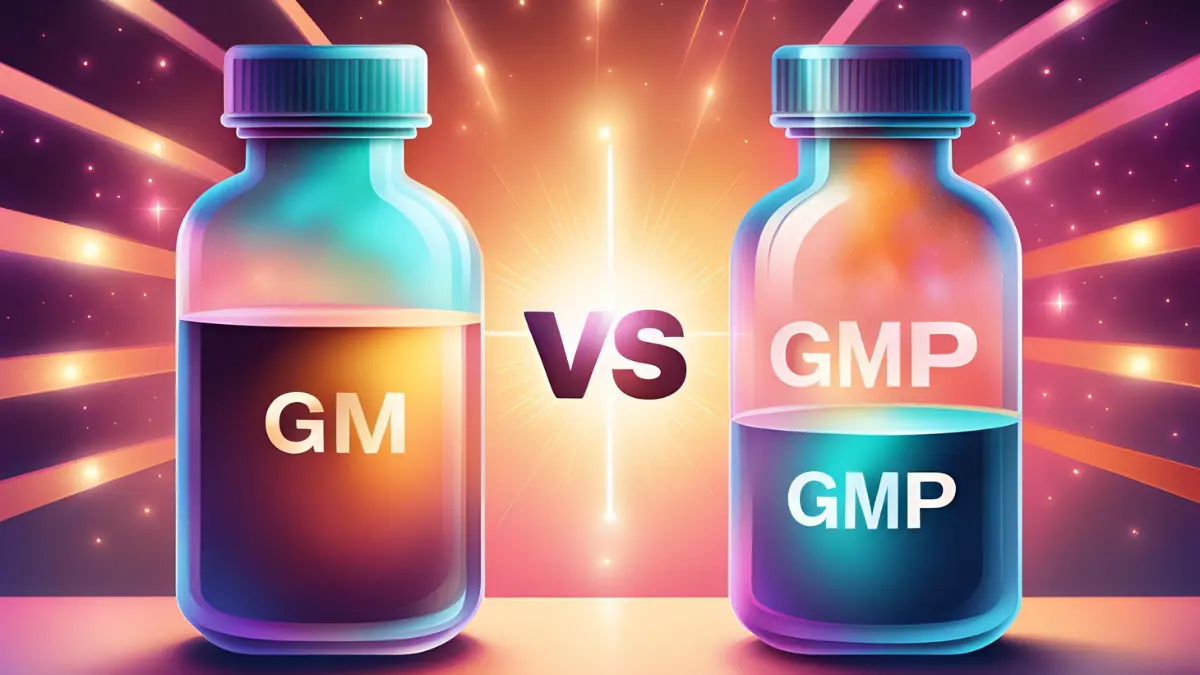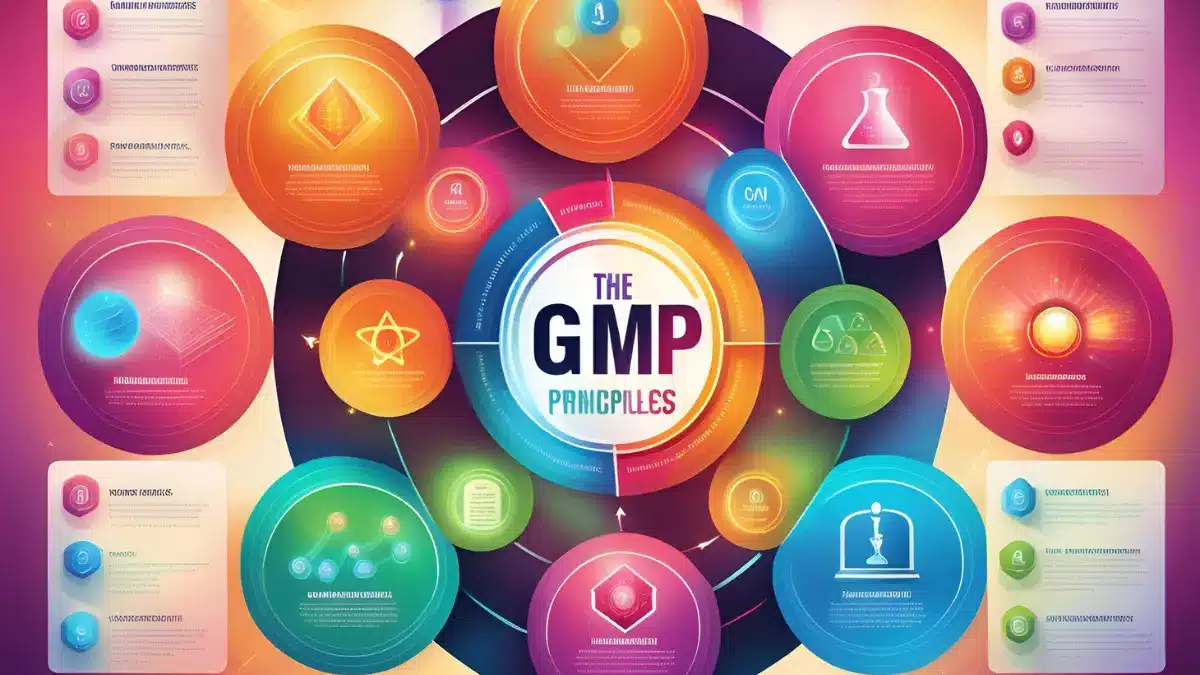Good Manufacturing Practices (GMP) are essential for Singaporean manufacturers to ensure quality and compliance in the global market. GMP is a set of standards that ensure products consistently meet appropriate quality standards, safeguarding consumer safety and maintaining the integrity of manufacturing processes.
The Health Sciences Authority (HSA) in Singapore aligns with the PIC/S Guide to Good Manufacturing Practice for Medicinal Products, ensuring local manufacturers meet international compliance requirements.
By adhering to GMP, manufacturers can prioritize quality assurance, implement robust processes, and mitigate risks. This article will explore the significance of GMP, its core components, its distinction from current Good Manufacturing Practices (cGMP), and the principles that underpin its implementation.
Table of Content:
Table of Content
Understanding Good Manufacturing Practices (GMP)
Good Manufacturing Practices (GMP) are guidelines that ensure products are consistently manufactured and controlled to meet high-quality standards and regulatory requirements. GMP acts as a framework for manufacturers to adhere to specific practices, guaranteeing product integrity and reliability.
GMP is essential across industries, from pharmaceuticals to food, cosmetics, and medical devices. Manufacturers who follow GMP demonstrate their commitment to quality, with regulations covering personnel training, facility maintenance, equipment calibration, documentation, and quality control.
By implementing GMP, manufacturers establish robust quality control systems, ensuring product consistency and preventing production risks. GMP plays a crucial role in minimizing risks, ensuring product efficacy, and protecting consumer safety and well-being.
GMP vs. cGMP: What’s the Difference?
When it comes to ensuring quality and compliance in manufacturing, Good Manufacturing Practices (GMP) and current Good Manufacturing Practices (cGMP) play important roles. While the two terms are often used interchangeably, there are some distinct differences between them.
GMP is a broader term that encompasses various industries, including food, cosmetics, and medical devices. It sets the standards for the consistent production and control of products to meet appropriate quality standards. GMP ensures that manufacturers adhere to specific guidelines and regulations to uphold product safety and consumer confidence.
On the other hand, cGMP specifically relates to the pharmaceutical industry. It is an updated version of GMP that focuses on the manufacturing of medicinal products. cGMP takes into account the unique requirements and regulations in the pharmaceutical sector, ensuring that pharmaceutical manufacturers follow stringent QC report measures throughout the production process.
Both GMP and cGMP emphasize the importance of quality assurance and compliance, but they differ in their scope and application. GMP applies to a wide range of industries, while cGMP specifically addresses the pharmaceutical sector’s requirements. Manufacturers operating in multiple industries may need to comply with both GMP and cGMP standards, depending on their product offerings.
Core Components of GMP: The Five Main Components
Good Manufacturing Practices (GMP) is a comprehensive system that ensures products are consistently produced and controlled to meet the appropriate quality standards. GMP consists of five core components that are vital for maintaining quality and adherence to regulatory requirements.
1. Personnel: The people involved in the manufacturing process are crucial to GMP compliance. Adequate training and qualification of personnel ensure that they understand their roles and responsibilities in maintaining product quality.
2. Premises: The manufacturing facility plays a critical role in GMP compliance. It must be designed, constructed, and maintained to provide a suitable environment for production, storage, and distribution of products. Proper hygiene practices, including cleanliness and pest control, are essential.
3. Equipment and Utilities: GMP requires the use of appropriate equipment that is regularly calibrated, maintained, and validated to ensure its reliability and accuracy. Utilities such as water, air, and energy sources must meet the necessary quality standards.
4. Documentation: Accurate and detailed documentation is an essential part of GMP. It includes procedures, instructions, records, and specifications that provide evidence of compliance with GMP requirements. Document control ensures that the latest versions are used and any changes are properly authorized and recorded.
5. Control of Materials: GMP mandates strict control over all materials used in the manufacturing process, including raw materials, intermediates, packaging materials, and finished products. This ensures their identity, quality, and traceability, preventing contamination or mix-up.
Each core component of GMP plays a crucial role in maintaining product quality and meeting the appropriate quality standards. By implementing and adhering to these core components, Singaporean manufacturers can ensure consistent production, control, and overall compliance.
The Ten Principles of GMP
Good Manufacturing Practices (GMP) are built on ten guiding principles that ensure the quality and safety of manufactured products. By adhering to these principles, Singaporean manufacturers can establish robust manufacturing processes and maintain compliance with regulatory standards. Let’s explore these ten principles in detail:
1. Strong Quality Management System
Your manufacturing operations should have a comprehensive quality management system in place. This system ensures that all necessary controls, procedures, and processes are implemented to uphold product quality and safety. It encompasses quality planning, quality assurance, quality control, and quality improvement.
2. Risk Management
Identifying, assessing, and mitigating risks is crucial in manufacturing. Implement a risk management system to proactively identify potential risks associated with product quality, safety, and compliance. This allows you to take preventive measures and make informed decisions to minimize risks.
3. Clear and Comprehensive Documentation
Accurate and detailed documentation is essential for GMP compliance. Maintain proper records of all manufacturing processes, including batch records, standard operating procedures, specifications, and quality control records. This documentation provides a clear trail of activities and enables effective quality control.
4. Qualified Personnel
Ensure that your manufacturing workforce is adequately trained and possesses the necessary skills and knowledge to perform their roles effectively. This includes providing initial and ongoing training on GMP requirements, quality control procedures, and safety protocols. Qualified personnel are essential for maintaining manufacturing integrity.
5. Proper Facility Design and Maintenance
Your manufacturing facility should be designed to facilitate efficient operations and ensure product quality and safety. Adequate space, equipment layout, and environmental control measures should be in place to minimize contamination risks. Additionally, follow a robust maintenance program to ensure that equipment is regularly inspected, calibrated, and serviced.
6. Validated Processes
All manufacturing processes must be validated to demonstrate their ability to consistently produce safe and quality products. This involves conducting thorough process validation studies, establishing appropriate process parameters, and performing ongoing monitoring to ensure process robustness and stability.
7. Proper Storage and Distribution
Implement storage and distribution practices that maintain product integrity and prevent contamination or deterioration. Adequate storage conditions, segregation of materials, and effective inventory management should be established to minimize risks associated with storage and distribution.
8. Stringent Quality Control Measures
Implement comprehensive quality control measures throughout your manufacturing operations. This includes conducting in-process checks, testing materials and finished products, and performing thorough inspections to ensure compliance with quality standards and specifications. Adhering to these measures helps identify and address any deviations or non-conformances.
9. Handling and Investigation of Deviations
Deviation management is crucial for maintaining control over the manufacturing process. Implement procedures for handling and investigating any deviations from planned processes, including root cause analysis and corrective action implementation. Timely identification and resolution of deviations help maintain product quality and prevent reoccurrence.
10. Continuous Improvement
Embrace a culture of continuous improvement within your manufacturing operations. Regularly review and analyze manufacturing processes, quality metrics, and customer feedback to identify areas for enhancement. Implement appropriate corrective and preventive actions to drive ongoing improvement and ensure long-term compliance with GMP standards.
Implementing these ten principles of GMP is essential for Singaporean manufacturers to uphold quality and compliance. By adhering to these standards, you can build a reputation for producing safe and reliable products that meet the highest quality standards.
GMP Regulations and Standards: Global and Local Requirements
Good Manufacturing Practices (GMP) regulations and standards are essential for ensuring global compliance and maintaining high product quality. These guidelines govern the manufacturing processes to ensure consistency, safety, and efficacy.
Internationally, GMP guidelines are established by reputable organizations such as the Pharmaceutical Inspection Convention and Pharmaceutical Inspection Co-operation Scheme (PIC/S). These global regulations set the standard for manufacturing practices in various industries, including pharmaceuticals, food, cosmetics, and medical devices.
While global standards provide a solid foundation, it’s important to note that local adaptations to GMP may exist to address specific regulatory requirements in different countries. Singapore, renowned for its commitment to excellence, has its own set of local adaptations in line with global regulations.
As a Singaporean manufacturer, it’s crucial to stay updated with both global and local GMP regulations. This ensures compliance with international standards while adhering to Singapore’s specific requirements. By understanding and implementing GMP regulations effectively, Singaporean manufacturers can establish themselves as trusted industry leaders committed to product quality and safety.
Implementing GMP in Singapore: A Step-by-Step Guide
Implementing Good Manufacturing Practices (GMP) in Singapore is a crucial step for manufacturers to ensure quality and compliance with international standards. By following a step-by-step guide, Singaporean manufacturers can successfully adopt GMP and elevate their manufacturing practices to meet global requirements.
The first step in implementing GMP is to understand the specific requirements applicable to your industry. This involves familiarizing yourself with GMP guidelines and regulations, such as the PIC/S Guide to Good Manufacturing Practice for Medicinal Products adopted by the Health Sciences Authority (HSA) in Singapore.
Once the requirements are understood, the next step is to conduct a gap analysis. This analysis helps identify areas where your current practices may fall short of GMP standards. By assessing these gaps, you can develop a plan to address them through the development and implementation of GMP procedures.
It is also essential to train personnel on GMP principles and practices. By providing comprehensive training, you ensure that everyone involved in the manufacturing process understands their roles and responsibilities in maintaining GMP compliance.
Internal audits play a vital role in monitoring and evaluating your GMP implementation. Regular audits help identify any deviations, non-compliance, or areas for improvement. By conducting these audits, you can continuously refine your manufacturing processes and ensure ongoing adherence to GMP standards.
Finally, seeking GMP certification is a significant milestone in the implementation process. GMP certification demonstrates your commitment to quality and compliance, increasing customer confidence and opening doors to global markets.
By following this step-by-step guide, Singaporean manufacturers can navigate the complexities of implementing GMP and position themselves as trusted providers of high-quality products in the global marketplace.





















































